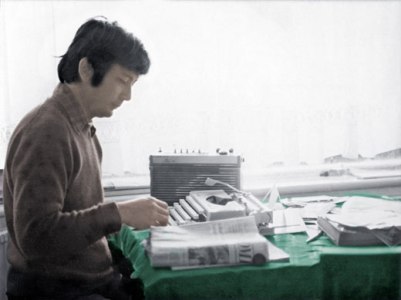Overshadowed by the US-China rivalry over Asia-Pacific security primacy, Japan over the past few years has begun to quietly but firmly assert its security role in East Asia and the Pacific.
Its long-standing alliance with the United States and linkages to the US-Korea and the US-Taiwan security treaties network has given rise to its renewed security presence in East Asia, particularly given the uncertainty over reports regarding possible implications of the ongoing Chinese civilian and military elite relations over the role of the military in relation to politics and party leadership.
Japan’s recently published annual Defense White Paper cites “the worrying influence of the Chinese military in foreign policy issues over the disputed islands in the East China Sea” and “the need to reaffirm the presence of US forces stationed in Japan” against “regional contingencies” and “to bring a sense of security” to countries in the region.
The publication of the paper has received strong criticism from neighbors China and South Korea. While China has attacked the white paper for its gross “distortions”, jeopardizing Tokyo-Beijing relations and heightened tensions in the region, South Korea has issued an official reprimand, particularly regarding Japan’s reiterated claim to the Takeshima Islands, which are also claimed by Seoul under the name Dokdo.
The Japan-China dispute over the Senkaku/Diaoyu islands has given rise to a perceptible nationalist surge in Japan, even as the Chinese military attempt to project its influence within the Chinese Party hierarchy, months before the expected leadership change within the Chinese Communist Party. Tensions are reported to be running high ahead of the 18th National Congress of the Communist Party of China, with the Chinese military’s desire to control the state’s military policy before the October 2012 congress — a forum held once in a decade to decide on party leadership change
at the top.
Meanwhile, Chinese defense ministry officials have tried to assure its domestic and foreign policy constituents that “protecting national sovereignty and maritime rights and interests will be closely coordinated with other departments in conscientiously discharging our responsibilities”.
In recognition that the civilian–military tussle has led to confusion among civilian and military leaders in Beijing, among command-level operational units in the PLA Navy and associated fisheries, as well as para-military forces in East China and South China Seas, the Japanese defense forces have been placed on high, though subdued alert.
Uncertainties regarding East Asia multilateral security policies is compounded by criticism in the United States that the “Asia pivot”, announced by the Obama administration in November 2011, has not resulted in a tangible manifestation that “60 percent of American forces will be deployed to the Asia-Pacific region”.
Several US congressmen and US think-thank analysts have pointed to the continued American deployment to Afghanistan, Pakistan and Iran. All this is in conjunction with uncertainty as to how the retrenchment of the US$450 billion US defense budget over the next 10 years will affect the “rebalancing” of US forces to the Asia-Pacific region, including the US-Japan alliance
system.
Preparing for these uncertainties has added urgency for the Japanese defense forces to quietly but firmly raise its profile in its relations with both US and Chinese forces, which have for so long overshadowed Japan’s security profile in East Asia.
